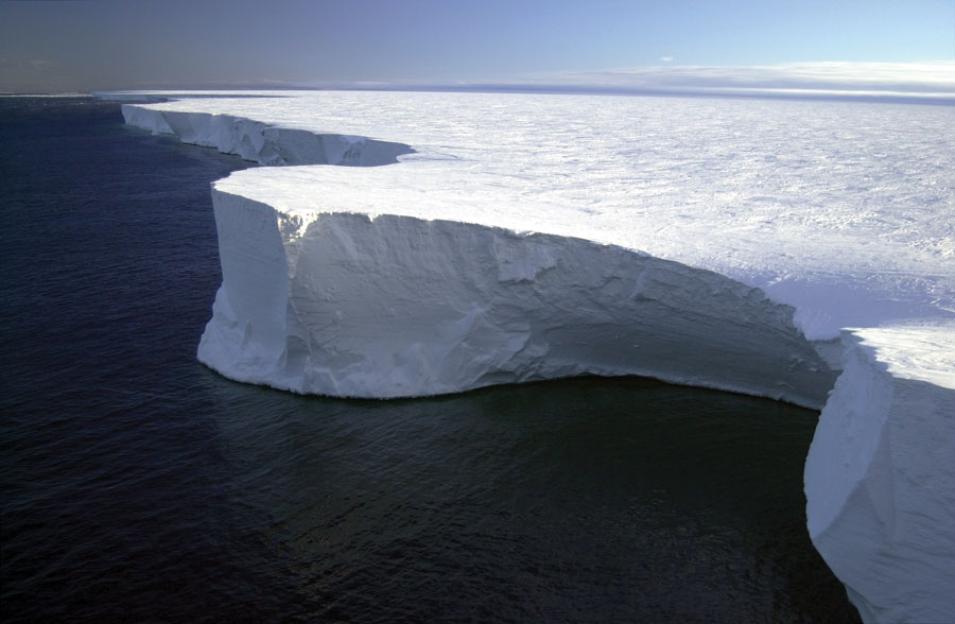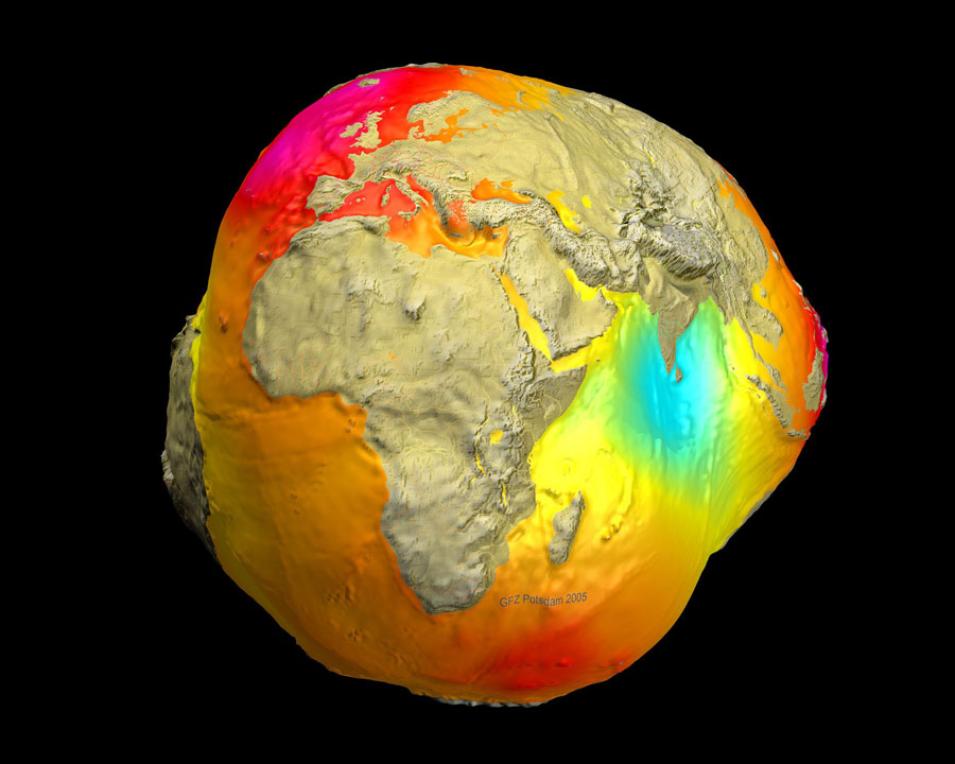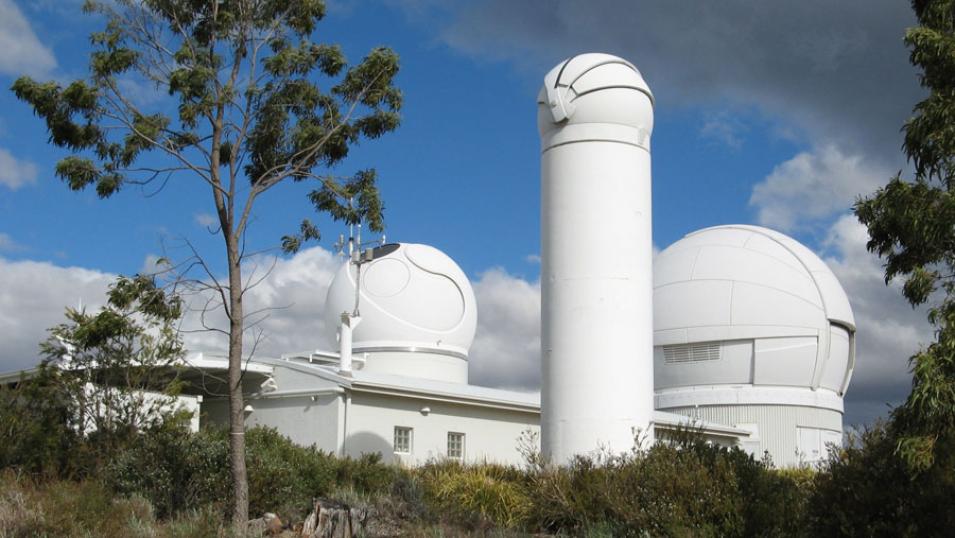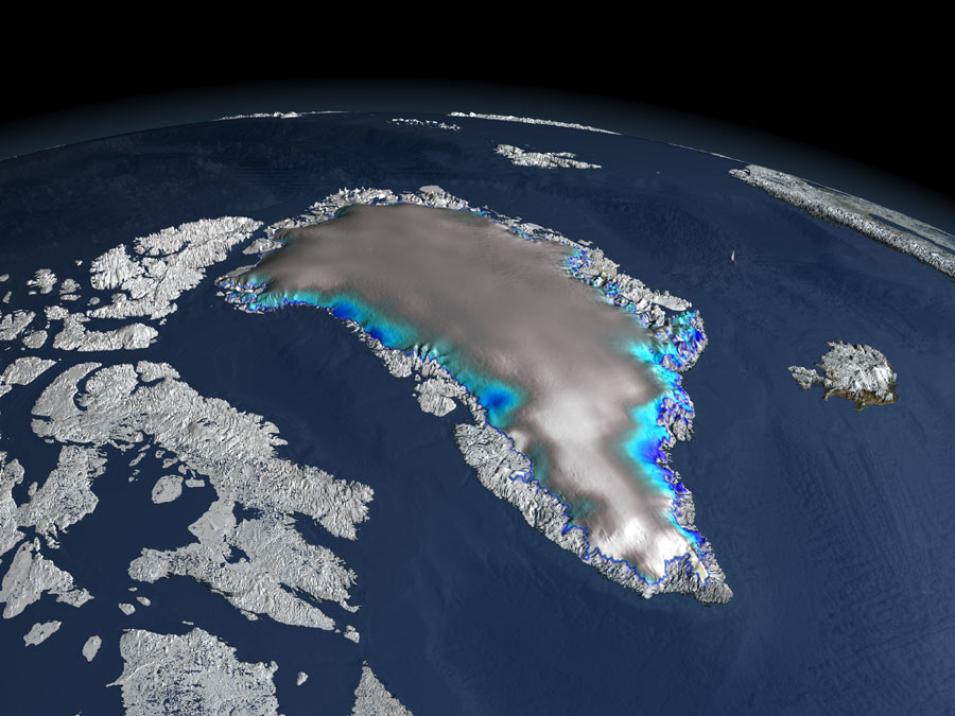Caught in a drift
One task of altimeter satellites is measuring sea surface height, which can get down to the centimeter, but for scientists to use that precise measurement, they need to know the satellite’s location at all times. To know that scientists have to understand Earth’s atmosphere and refraction, and factor in a satellite’s shape and reflective properties. They have to know the laws of physics that allow a satellite to orbit Earth and how a myriad of forces—ocean tides, moon and sun perturbations, and solar photon pressure—impact it over time. More nuanced forces like Earth’s heating and cooling also act on the satellite. “That’s a whole family of unruly relatives we’re trying to better understand,” Zelensky said. But gravity is the kicker.
Earth’s gravity field reflects Earth’s mass distribution, which gets rattled by the global water cycle, movement in the atmosphere, and mass transport in the ocean. “What we’re concerned about is how accurately we model the variations in Earth’s gravity field over time,” said Frank Lemoine, a geodesist with NASA. To measure ocean surfaces, scientists use an idealized Earth that averages gravitational pull. Gravity, like water, shifts. The ocean stirs continuously. It rises and falls with tides and currents, while changes in winds and salinity, or density, fluctuate currents. Temperature change is not uniform around the globe, so parts of the ocean will warm faster than others, causing sea levels to rise disproportionately.
Altimeter satellites easily measure these changes by calculating sea surface height from a stable reference point, Earth’s center of mass. “But one of the challenges of using altimeter data from any satellite is to compute where the satellite is as a function of time,” Lemoine said. Because altimeter satellites measure the radar pulse bounce from satellite to ocean surface in centimeters, knowing their precise location is critical. The challenge has been in determining Earth’s center of mass—a nuanced, fickle point because of continuous mass redistribution on Earth’s surface.
Earth is also not perfectly round. Squished at the poles, Earth bulges at its midsections. Beyond that, its crust is dynamic, jolted by earthquakes, while also slowly rebounding from the last Ice Age when giant ice sheets crept over the Northern Hemisphere, deforming the ground. So scientists use a theoretical sphere, a geoid, which maps the lands and oceans under the influence of Earth’s gravity. But gravity does not pull everywhere equally, turning the geoid into a bumpy ball.
“The paradox is that to use altimeter satellites to monitor our changing Earth, in particular ocean state changes, this Earth dynamically affects how accurately we can compute the satellite orbit,” Lemoine said. Defining Earth’s center of mass is like reaching a mirage. Earth is subtly and constantly changing shape. To measure changes in sea level, these shifts must be defined. “To measure the ocean surface, you need a stable reference frame,” Lemoine said.



